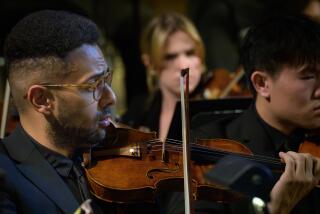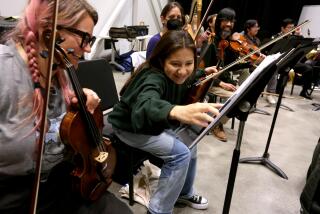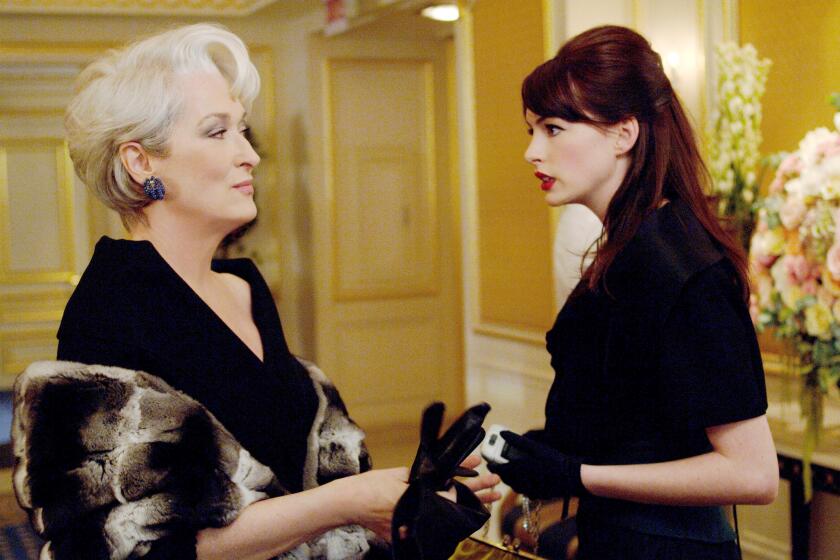Cygnus Ensemble Shows Its Expertise
- Share via
Monday Evening Concerts are among our trustiest sources of new music sustenance, and Monday at the Los Angeles County Museum of Art, the stage belonged to a skilled, fresh-faced bunch. The New York-based Cygnus Ensemble has the distinction of an unusual but surprisingly balanced instrumentation: two guitars, violin, cello, flute and oboe.
In fact, the format harks back to the 17th century mixed ensemble known as a broken consort. For contemporary musical purposes, the novel setting and the expertise of these players have made them a group worth composing for--and listening to.
From established contemporary composers, we heard the angular quasi-impressionism of Toru Takemitsu’s flute and guitar duet, “Toward the Sea,” and microtonal explorer Giacinto Scelsi’s “L’Ame Ailee,” for solo violin. Here, Jacqui Carrasco expertly worked in the cracks of two nearly identical pitches on separate strings, suggesting there a mystical other world.
Among the Los Angeles premieres were the opener, John Halle’s rather flat folk minimalist schematic “Spooks,” and Sean Varah’s “Cygnificant Other.” In Varah’s piece, an electric guitar starts out with subtle volume- pedal-colored gestures and ends up overbearingly loud--a joke about the reputed power lust of plugged-in guitarists.
We also got one bona fide world premiere, Mark Mellits’ “8 Etudes for Two Guitars,” played well here by Oren Fader and William Anderson, despite a few rough spots. Lovely and smart, nodding respectfully to the influence of Brazilian composer Villa-Lobos, the work treats the guitar duo alternately as a rangy mega-guitar and as a source of rippling canonic echoes.
Another L.A. premiere was “Composition No. 189” by Anthony Braxton, one of those brave, unhinged souls who stirs up new music, jazz and other ideas and gets away with it, artfully. This is one of his “Ghost Trance Music” pieces, in which all musicians read the same score but treat it differently, shifting clefs and textural approaches. The effect was fascinating: A common theme takes odd, varied turns across the stage, suggesting multiple malleable perspectives on a singular musical object.
Sebastian Currier’s fitting finale, “Broken Consort,” complements this group’s musical identity and fiber. The score is willfully schizoid, alternately hovering in a harmonic zone and kinetic, verging on but never succumbing to chaos. In the end, atmospheric haze wins out.
More to Read
The biggest entertainment stories
Get our big stories about Hollywood, film, television, music, arts, culture and more right in your inbox as soon as they publish.
You may occasionally receive promotional content from the Los Angeles Times.










